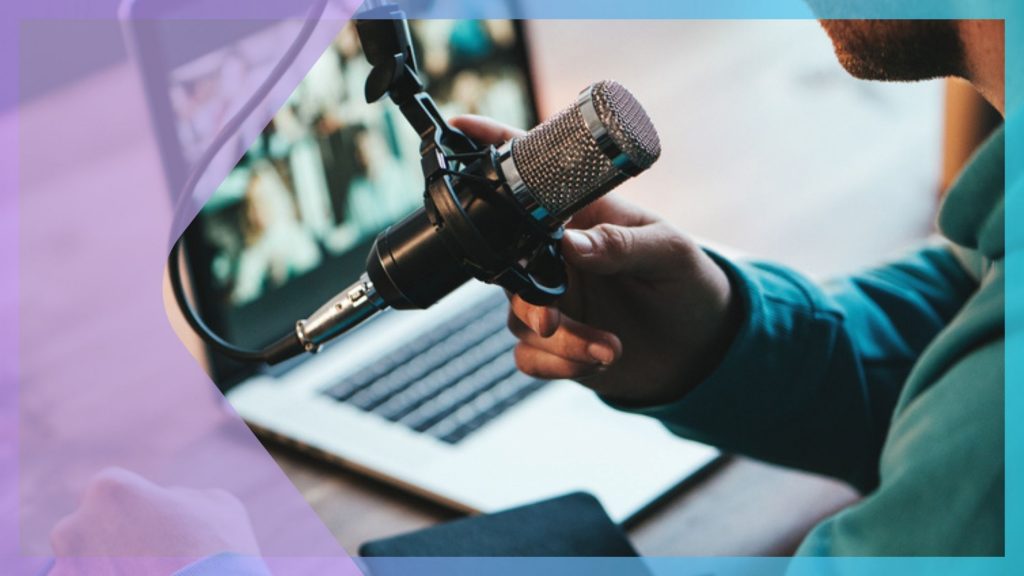Tips for Improving Podcast Accessibility
Discover how you can easily improve the accessibility and value of your podcast and reach a wider audience.

Podcasts—it seems like everyone’s listening to (or hosting) them these days.
And although we surely don’t need to tell you about how massively popular they’ve become as a content format, we’d like to share a few eye-popping stats with you anyway:
- As of this year, there are over 2 million active podcast shows
- Nearly 900,000 podcasts were launched in 2020 alone
- Listeners in the U.S. are expected to increase to 100 million by 2024
With a low barrier to entry (the gift of gab being the primary qualification), minimal equipment requirements, and a booming appetite from audience members, it’s no wonder that podcasts are experiencing something of a golden age.
It may seem obvious that podcasts would be inextricably linked to the act of listening. However, it may surprise you to learn that that’s not actually true in a lot of cases. There are a surprisingly large number of Americans with disabilities—many of them among the 10 million-large deaf or hard of hearing population—who regularly consume podcast content. It’s therefore crucial for podcasters to make their shows fully accessible to all who want to enjoy them.
Here are a few things you can do to prioritize digital accessibility for your podcasts:
Have an Accessible Website
Your website is the online storefront of your brand and serves as the flagship for promoting your podcast. But if you haven’t focused on creating an accessible website, you’re potentially missing out on a sizable audience (and possibly opening yourself up to legal risk as well). An optimized user experience is a must.
There are a number of ways to tweak your website for content accessibility. The first is to make sure there is sufficient color contrast between any text and the background on which it appears. You should also ensure that the site’s content is usable with screen readers and other forms of assistive technology.
A couple additional things to consider: make the content on your website navigable and functional by keyboard or voice controls—basically any method that isn’t a mouse. Furthermore, all of your images should have alt text describing what is depicted to benefit the visually impaired.
Provide Transcripts and Captions
Possibly the single most important thing you can do to improve the accessibility of your podcasts is to provide transcripts—text-based versions of your podcast’s audio content. And not only do transcripts help out people who are deaf or hard of hearing, they are also good for SEO and make your podcast easier to find for search engines.
Your transcripts don’t necessarily need to be 100 percent composed of text. You can enhance them with other kinds of content that you’re unable to present in an audio format. Think images, charts, graphs, even gifs if you’re feeling up for it. All of these little extra touches can help make your podcast more impactful for your audience.
It’s true that typing transcripts manually can be a tedious and time-consuming task. Fortunately, professional transcription services are a thing, and Rev is the best in the industry. Our technology utilizes speech recognition software that can produce transcripts very quickly. It can also be incredibly inexpensive, making it a good option if you’re on a tight budget or working on a short timeline.
Use an Accessible Media Player
In order to cast as wide of an audience net as you can, your podcast should be available on an accessible media player. (Incidentally, having such a player is also a requirement for a fully accessible website.) Accessible players benefit audience members who have disabilities that make it difficult for them to navigate and engage with media player controls.
There are several features that compliant media players offer. The first is clear labels—perhaps with enlarged symbols or text—that indicate the buttons or controls on the player, like play, pause, forward, rewind, and volume. Accessible media players also have the ability to be activated and controlled via the keyboard alone. Finally, these media players do not typically have an autoplay feature.
Mind Your Audio Quality
The importance of having crisp, clear audio recording cannot be overstated. Staticky or echoey audio is jarring and uncomfortable for listeners, and can quickly turn them off to your podcast. And with so many podcasts available, they’re unlikely to give you another chance if you lose them.
The good news is that getting good quality audio is easier and more affordable than ever before—there’s no need to shell out a bunch of cash to rent a professional studio. First of all, you need to get a quality microphone. There are a number of great options for under $200, including from top brands like Shure and Blue. You should also use a pop filter to prevent audio peaks, These are super inexpensive—they can be found for under $10.
Testing your microphone’s gain to make sure the input levels fall within the acceptable range is a necessary pre-recording procedure too. Also, ask your guests to speak clearly and maintain an optimal distance from their microphones.
If you have any other questions about how you can provide an accessible podcast experience to all, please don’t hesitate to get in touch with us. We’d love to help you “make some noise” using this powerful medium.
Subscribe to The Rev Blog
Sign up to get Rev content delivered straight to your inbox.



